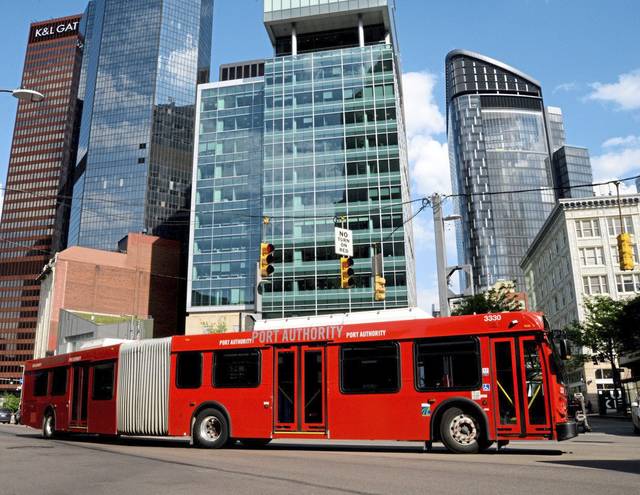New data shows Pittsburgh commuters have it pretty easy
Pittsburgh commuters using public transportation have shorter trips and fewer transfers compared with some of the largest cities in the country, according to a report released this week by trip-planning app Moovit.
The average one-way commute on public transportation in and around Pittsburgh is 38 minutes, and more than half of commuters don’t have to transfer during their trip.
In Los Angeles, on the other hand, a quarter of commuters need three or more transfers. Five percent of Pittsburgh commuters need three or more transfers.
Moovit tracks public transportation in more than 100 U.S. cities but compared data among 10 metro areas: Los Angeles, Miami, New York/New Jersey, Chicago, Philadelphia, Boston, San Francisco, Washington/Baltimore, Seattle/Tacoma and Pittsburgh.
The app maps more than 3,000 cities across more than 90 countries. It relies on information from transit agencies and local users. Its 2019 report on public transportation trends comes from the analysis of trip requests and other data from its more than 600 million users.
Pittsburgh-area commuters traveled the shortest distance among the 10 cities studied with an average commute of 4.4 miles. In Miami, which has the longest average distance, that jumps to nearly 8.5 miles.
The area is also tied with Boston for the least amount of time spent waiting for buses or trains at 11 minutes. Pittsburgh is fifth in terms of the number of people who say they wait less than five minutes for their bus or train at just under 22%. In the Washington/Baltimore areas, 27% say they wait less than five minutes.
The trends also show that 63% of Americans have never used micro-mobility — bikes, scooters and so on — even though it’s offered in their cities. In Pittsburgh, that number is higher: 81% have never used those forms of travel.
Yovav Meydad, the company’s chief growth and marketing officer, said the numbers his company crunched can be helpful for more than just travelers.
“This report can be a very beneficial tool for any city or agency looking for an accurate picture of the infrastructure supporting daily travel habits of citizens in their cities,” he said.
The report also asked users what would encourage them to use public transportation more. Locally, almost 13% said more accurate and reliable arrival times would help. The second-most popular answer at just under 12% was a higher frequency of public transit vehicles and shorter wait times.
Meydad told Forbes that’s a sentiment across the board.
“When we asked what would encourage (users) to use public transportation more, they said they wanted accurate arrival times but also a higher frequency of services so they don’t have to wait at different stops,” he said.
Remove the ads from your TribLIVE reading experience but still support the journalists who create the content with TribLIVE Ad-Free.

